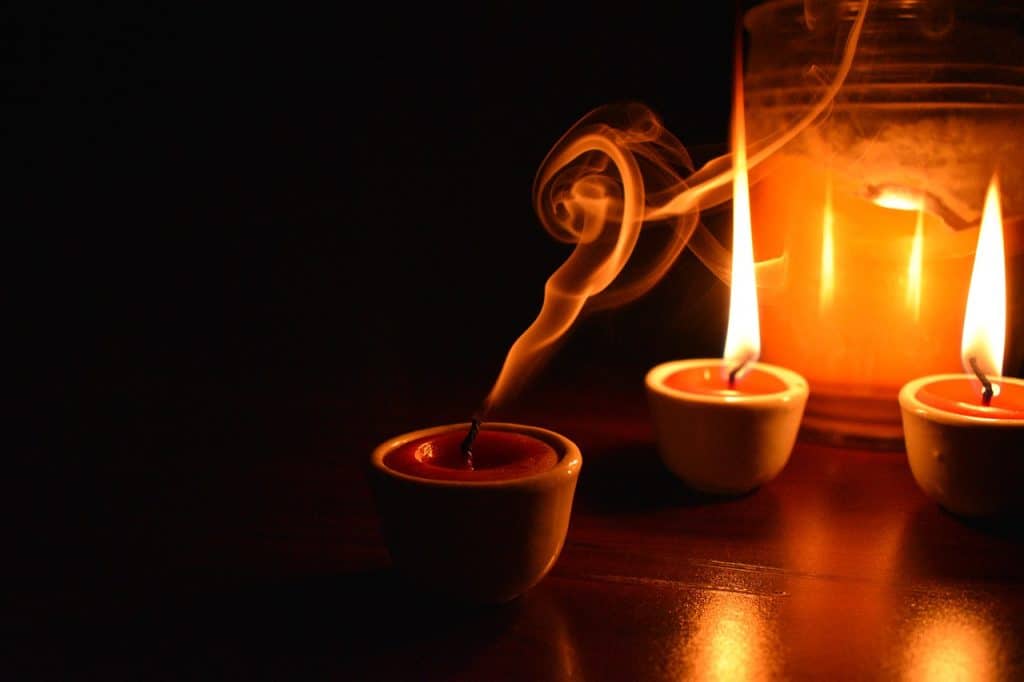Candles are light sources comprising of a wick covered with a flammable solid such as bee wax or paraffin wax. In the past, candles were used for keeping time, providing heat and as light source, but in today’s world more aesthetic use of candles have emerged such as for decorative, religious and ritual purposes. They are also used as emergency lighting.
Man’s quest for betterment of life and his innate problem-solving ability gave rise to the need to produce what is now known as candle. Before the advent of candles, liquid oil lamps were in use to provide light, but these oil lamps had spilling tendencies and also their wicks had to be advanced by hand. This was not convenient for man, so he had to come up with an easier-to-handle technology.
Candles are made commercially by professionals known as ‘chandlers’, they can also be made at home for personal use. Waxes and wicks which are the major ingredients used in candle making are readily available in the market- other ingredients too. Once these ingredients are purchased candles can be made easily at home following easy techniques. Let’s find out below what ingredients are used for good candles!
The ingredients used for producing candle
Candles basically consist of two ingredients: the wick and the flammable solid (wax) which serves as a fuel. Other ingredients too are used, and they serve as coloring agents or as source of fragrance.
FLAMMABLE SOLID (wax)
Waxes combine with oxygen to give constant flame to candles while burning and melting. In the process of time, various kinds of waxes have been used to produce candles, although many of these waxes are no longer in use due to one deficiency or the other. Those still in use are used for different reasons other than the initial lightning purpose. In today’s candle market, various waxes are combined to create candles with desired quality. For instance, most candles sold in the United States contain paraffin, stearic acid, bee wax and sometime carnauba wax.
Below are some of the waxes used for making candles:
- TALLOWS: tallows are rendered from beef and mutton fat and are made up of triglycerides. They can be made from many other animal fats like deer, goat etc., but that of cow are sheep are the most common. At room temperature, tallows are solid; that is why they were used as flammable solids in candle production, although they produce very smoky flames.
During the Victorian era, candles made from tallows were most popular but with time they were replaced with more convenient and cheaper alternatives. In modern times, tallows are being used together with fragrance oils to make candles for aromatherapy.
Tallows burn slowly and give good light- their lights are more brilliant than those of candles from bee wax. They hardly have any smell, but when not rendered completely or when contaminated by moisture, they smell very bad. Candles from tallows are of two kinds, the dips and the molds, the dips are economic types and give less light compared to molds the same size. Alum is often added to tallow candles to make it hard.
- OTHER ANIMAL FATS: Some animal fats have been used over the years for candle production. Ancient Chinese candles were made from whale fat. Wax known as spermaceti from sperm whale was used around the 18th and 19th century. Candles made from spermaceti were of standard photometric value and do not have unpleasant odor.
- PLANT WAX: Waxes from plants like bayberry, soybean, carnauba, and cinnamon can be used for candle making. When bayberry plant ripens, the soft, aromatic waxy substance it produces which has an herby scent and transparent green color can be used for candle making. Candles from bayberry wax are used for decorations. In ancient India, another kind of plant wax obtained from boiling cinnamon was used for making temple candle. Soy waxes made from 100% soybean oil are mostly used for container candles.
- MICROCRYSTALLINE WAX: this kind of wax is produced by de-oiling petroleum jelly. It is darker, stickier, heavier, more viscous and more elastic than paraffin wax. It also has a higher melting point.
- BEE WAX: Bee wax is produced by honey bees; it is by far the most preferred flammable solid for candle making due to its pleasant natural smell and workable texture. In fact, they are allegedly better candle wax compared to other waxes because they last longer, do not bend and are brighter. Bee wax burns readily and cleanly.
- PARAFFIN WAX: Paraffin wax is a bye-product of petroleum refining. There are three classes of paraffin wax based on their melting points: the low-melt point paraffin, medium-melt point paraffin and the high-melt point. The low-melt point paraffin is used for container candles while the medium and high-melt points paraffin are used for molded candles. Candles from paraffin wax are cheap but are often of high quality.

WICK
Candle wicks were in the past made from reeds and rushes, and later from natural fibers. They are now made from high grade cotton or linen and also from wood, although rare. Over time, these wicks evolved from simply twisted strands to tightly braided strands, these modern wicks are referred to as self-trimming or self-consuming wick as they curl over as they burn and excesses are incinerated. Properties of the candle wick like its diameter, stiffness, tethering and fire resistance influences how the candle will burn.
Wicks are sometimes infused with ammonium nitrate or ammonium sulphate to make them not to glow after extinguishing. Stiffeners like copper wire are included in wicks sometimes to make them more rigid and to make the wax melt more readily- this is particularly important for use with very hard wax.

OTHER INGREDIENTS
- FRAGRANCE OIL: fragrance oils are also known as aromatic oils. In nature, there exist many fragrance oils some of which include vanilla, pepper mint, cedar wood, sandalwood, cinnamon, lemon grass, etc. they are used as source of fragrance in some scented candles.
- ESSENTIAL OILS: these are plant based oils. They have the aroma of the plant from which they were extracted. They are extracted by distillation and are used as fragrance-providing agents in some scented candles.
- DYES: Aniline-based dyes are best used for making colored candles. Crayons can also be used in making colored candles since they are also made from wax.
The ingredients used for making candles are: wax, wick, color and fragrance source.




